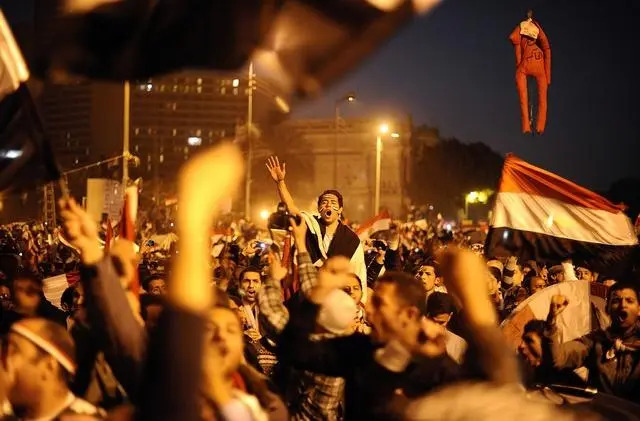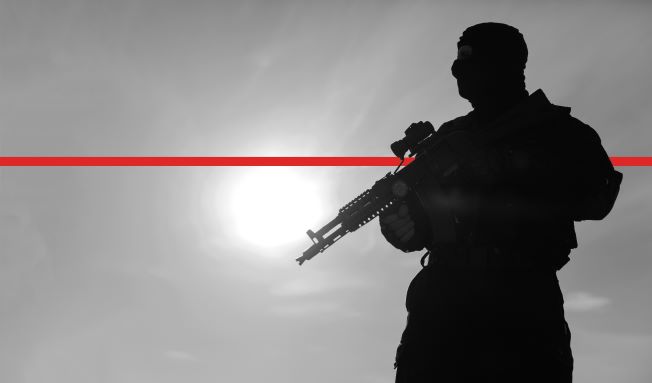Context
In its 2013 forecast, PoliTact had laid out a picture of the campaign against extremists that differed dramatically from the mainstream media. Many of these assessments were on the mark. As we approach the end of 2014 and enter the stage 2 of this campaign, these projections need to be revisited. As we conduct this exercise, the premises, tactics and strategies used to fight the war in the previous stage will also be reexamined, including their shortfalls and inadvertent consequences. It is this scrutiny that will point to what we can realistically be expected in the future, or stage 3.
No other factor impacts the future of Pakistan, and its ties to other major international powers, than how it handles the stage 2 of the war against terror. And for this reason, it is critical to understand the characteristics surrounding this budding phase.
1. Eliminating the Leadership
After 9/11, one of the major emphases was to hunt down the head honchos and the perpetrators. The assumption was that if the leadership is eliminated, and those that replace them are also eradicated, the extremist outfits they represented would weaken overtime and disintegrate. The reality has played out differently. The elimination of Osama bin Laden may have weakened Al Qaeda (AQ) but the associates have emerged stronger and the extremist threat has spread to many new corners of the MENA (Middle East and North Africa) region. This has created what is now identified as the phenomenon of AQ and Associates.
Moreover, seemingly AQ now also has a competitor in the form of Islamic State (also known IS, ISIS, and ISIL). Within these various extremist groups there is a process of fusion and fission occurring simultaneously. The associates of AQ in the South and Central Asia and Middle East are having to decide their alignment with either AQ or the ISIS; obviously their can only be one Amir ul Momineen. In the case of Pakistan, the Taliban have splintered, some are beginning to align with IS and changing their long-standing affiliation with AQ.
One the one hand, this internal friction and power struggle is positive as this divides the enemy. On the other hand, this splintering has diversified the threat to the regimes in the region and to the West.
2. Nation-State Structure, Sovereignty, and Sectarianism
Another character that illustrated the previous phase and continues to presently has to do with the constraints presented by the nation-state structure and state sovereignty. Associated with this is the persistent question of safe havens where extremists can regroup, cross-pollinate and launch fresh attacks.
Since 9/11, the coalition forces have felt restrained by international borders while the extremists have conveniently crossed borders to other sanctuaries once they felt pressured in one location. This was the case in places like in Iraq, where extremists were travelling back and forth from Syria and other regional nations. The challenge has also remained highly prevalent on the Afghanistan-Pakistan border.
To counter this, American forces were authorized to take action wherever the extremist threat existed. This example was followed by Israel, and recently UAE and Egypt carried out air strikes against extremist groups in Libya as well.
At the same time, it was in Iraq where the sectarian dimension was added to the mix, and later resulted in the Sunni Awakening. Had it not been for the Iranian support, the NATO and US task would have been easier there. This is similar to what is taking place in Syria presently where Assad would not have lasted against Sunni AQ, IS, and moderate opposition (Such as the Free Syrian Army) without the urban fighting skills of Shia Hezbollah and Russian support in the Security Council.
Thus over time the war against terror has inadvertently weakened the nation-state structure of the region. On the one hand, the states inflicted by terrorism are under extremist attacks and at the same time struggling politically to maintain credibility on the street. The legitimacy of the states was under scrutiny even before the war against terror had started, as many have failed to govern and provide services to their burgeoning citizenry. This combustible mix was one of the causes that triggered the uprising now know as the Arab Spring.
As the priority of the West has remained on fighting the extremists, many autocrats of the region adopted the garb to persist and maintain the status quo. However, that strategy has proven to be short lived; ultimately, these governments would have to deal with both, increasing vocal citizens and the growing threat posed by the non-state actors operating across borders.
The stark irony is that it’s not in the control of any state to deal with extremism on it’s own. It’s a regional and global phenomenon, which requires dealing with the causes. Furthermore, the war against non-state actors has now gotten entangled with the global power tussles, apparent in Syria particularly. This leads to the question of if a political or military approach will be needed to win it. And what happens to extremists in stage 2 and 3, if the global power play between US, China, and Russia heats up further in different corners of the globe.
3. The Question of Ground Troops and Mission Creep
In the first stage the US and NATO maintained their ground presence in Afghanistan and Iraq at a tremendous cost. The successes, however, were proven to be only temporary and easily reversible: the present situation of Iraq being the case in point. What occurred in Iraq has significantly raised the stake for the withdrawal from Afghanistan. This reality has now forced US to extend its combat mission in Afghanistan and the return of western advisors to Iraq and other places in the MENA region.
Over the years as the fiscal condition dwindled and the security situation worsened NATO has been forced to develop new strategies to counter extremists. The new policy is focused on a smaller footprint and more use of rapid reaction Special Forces and Smart Technologies, such as drones, to achieve the objectives. For this purpose, NATO forces have been preparing for touch and go type operations and has established bases across the region. Additionally, the emphasis is on enhancing the capabilities of the allies, through providing military equipment and training, so they can lead the fight.
The dilemma is that many of these allies, especially in Iraq and Afghanistan, have proven incapable of resisting the extremist onslaught on the ground, absent western advisors and air support. This has raised questions about the efficacy of training the Iraqi and Afghan forces received in the past, and the utility of more training. Or, in other words, is it a question of capability or will?
Nonetheless this has raised alarm for stage 2 of the campaign. Who will take on the burden of heavy fighting on the ground if the radicals are gaining and the allies are proving incapable? The American leadership is making it clear to its Arab partners that while they can assist, the responsibility for countering the extremists rests on their shoulders.
In the resulting vacuum, the most successful fighters on the ground against IS/AQ are proving to be the Kurds and Hezbollah. Or, in other words it is the non-state actors under state influence against those non-state actors that seemingly do not listen to anyone (IS/AQ and Affiliates). This is setting up a dangerous precedence and symbolizes the return of proxy wars.
While the initial goal of the war against extremism was to go after the perpetrators of 9/11, over time it has extended to dealing with rogue leaders and regimes that can potentially acquire weapons of mass destruction, are allies of Russia or China, have undemocratic set-ups, and carry hostile intent towards the West. The elimination of Saddam Hussein, Muammar Qaddafi, the present attempts of regime change in Syria, and P5+1 negotiations with Iran, are all linked to this risk.
While Russia and China share with US the apprehensions regarding the spread of non-state actors, they are also concerned about what it means for their influence and allies in the regions concerned.

4. The Ideology and Societal Transformation
One of the least explored and understood aspects of the campaign against terror has been the grave societal transformation brought on by years of constant warfare and disruption. Thousands have died and millions have been uprooted. One of the obvious outcomes of this has been the gradual push towards religious conservatism, increasing militancy and lawlessness, diminishing economic prospects, and growing political and ethnic polarization of the nations inflicted by the scourge.
As alluded to previously, the blame does not just reside with the West, the local governments are equally liable for their disorientation and failure to understand the dynamics of the societal change underway. Recently held elections in Afghanistan, Tunisia, and Egypt etc. all have produced very close results and the demonstrated the need for political reconciliation. However, achieving political consensus such a volatile and divisive environment is extremely challenging.
The evolution of politics in Egypt perhaps provides a perfect illustration of this phenomenon, where after the removal of Mubarak, Muslim Brotherhood was able to gain power through a close election. However, Morsi’s government was removed subsequently and now Sisi’s actions seem more an attempt to maintain a status quo. While many claim that it was the unwillingness of Mursi to share power that led to his demise, however, external threat posed by his regime to Israel and other Arab nations were also strongly at play against him.
Questions are now being raised if the Arab Awakening has hit a dead end. The terminology adopted by western think tanks is suggestive of how to answer this question. The Arab Spring inflicted nations, including Afghanistan and Iraq at some level, are now perceived as ‘countries in transition.’ This transition involves constitutional changes that would prevent religiously oriented political actors from gaining power, and with emphasis on promoting reconciliation among the other political stakeholders.
This approach is based on a fear that extremists may use the mainstream religious groups to arrive at the helm of power, especially when they do have a soft corner for them. In this transition, there is an attempt to have nationalist factions align with liberal thought, as oppose to the religious conservative elements. The political dynamics of Pakistan can also be understood in this context.
PoliTact has pointed out the futility of this approach, especially as the societies become increasingly conservative. The mainstream religious parties present the best hope to prevent the slide towards the abyss. As oppose to viewing them with apprehension, they should be looked upon as an opportunity. Similarly, if the negotiations with Iran over its nuclear program were successful, it would suggest that if properly engaged, even theocracies can behave rationally.
Stage 1 of the campaign against extremism has shown the limitation of a purely military approach. To prevent the failure of the stage 2 that is presently unfolding, the emphasis would have to be on reconciliation. This would involve setting up a political architecture that involves the moderate political conservatives at it center. They are the best suited, and the last hope, to counter the extremist ideologies and moderate the extremists, and to check the otherwise inevitable trajectory. Blocking these elements from political participation, like Egypt is attempting, will result in an even harsher backlash.
In future articles, we will continue to discuss the shifting assertions of the campaign against terror. What can be said at this juncture is that viewing this campaign separate from the global and regional tussles for balance of power would be pure naivety. Moreover, the regional governments that are leading the fight against extremists would be have to be extremely careful to not overlook the public sentiment and the provision of services to them.




